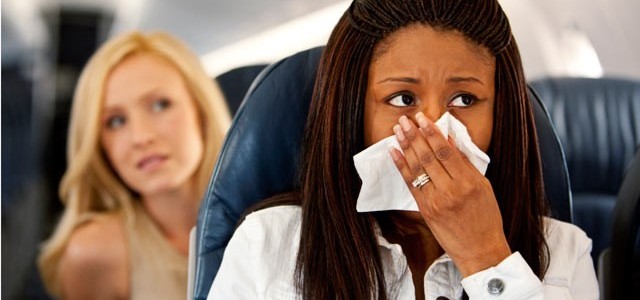
Some say their lowest moments in travel history has been covering their face with a pillow as the planes cabin interior gets hosed down with disinfectant spray on the runway in Senegal during a 2am stopover.
In an effort to get ‘under the hood’ of this inconvenience of modern day commercial air travel, we did some research, and spoke directly to South African Airways about the practice of airplane cabin spraying after the doors have been sealed.
Why do airliners spray?
The Civil Aviation Authority says:
“The process of ‘disinsection’ is required under the International Health Regulations of the World Health Organization (WHO) on flights to and from certain destinations to prevent infectious and contagious diseases carried by insects and other volatile bodies. Rules established by the International Civil Aviation Organization (ICAO) require that disinsection does not injure or cause discomfort to passengers or crew. These rules permit the use of certain insecticides, which have the approval of and are recommended by the WHO based on their effectiveness and safety.”
The World Health Organization (WHO) says:
“Residual ‘disinsection’ provides an insecticidal deposit on inside walls of structures (cargo areas or passenger cabins) to kill target insects that come into contact with the treated surface. Such deposits are intended to remain active for an extended period of time. For aircraft disinsection, WHO currently recommends d-phenothrin (2%) for space spraying and permethrin (2%) for residual disinsection.” – [Source: WHO]
SAA says:
“This process has been prescribed to us by international health regulations stipulated by WHO. All International and Regional services operating in and out of the Republic of South Africa must be disinfected according to the “blocks away” method at the last point of call prior to leaving and entering South Africa. In some countries like Australia and the US, it is a health requirement by their customs authorities. We also have to spray the cargo hold before travelling to these countries. By spraying the cabins on SAA flights we are in compliance with international protocols. We are not required to use any disinfectant spray other than the WHO approved one. The spray is not an SAA spray but a WHO spray.” – Nape Malatji, SAA
What spray does a major carrier like SAA use?
For the purpose of disinfection of South African Airways aircraft, single-shot Servopak Airline Insecticide (Reg.No L1907 Act 36/1947) aerosol dispensers are utilized. All possible insect harborages inside the aircraft must be treated. The active ingredient is Permethrin. The World Health Organisation (WHO) has declared the spray safe for use onboard the aircraft. Port Health authorities worldwide monitor the spraying of the aircraft. Extensive research has been conducted regarding the safe use of Permethrin for aircraft disinfection.

Is the spray harmful to passengers? What can passengers do to prevent being effected by the spray?
The spray used by airliners is not harmful to passengers. According to South African Airways, passengers irritated by the spray can, “Cover their noses, mouths and eyes until it is over”.
[polldaddy poll=8227446]
Sure,like this…instead of the fumes to lungs and the breathing system..
Arthur if you had the flu then you didnt catch it on the plane you caught that virus a couple of days prior to getting on the plane you idiot…….The typical incubation period for influenza is 1—4 days (average: 2 days). Most healthy adults may be able to infect others beginning 1 day before symptoms develop and up to 5 to 7 days after becoming sick……shakes head and walks away….typical man and i bet what you had was actually a flipping cold which can too take some times several weeks to get rid of and even if it was a cold it can you would have caught that between 24 and 72 hours before you got on the plane……jeeez what are some men such big babies????? man flu is what you had, take 2 paracetamols and get back to work!